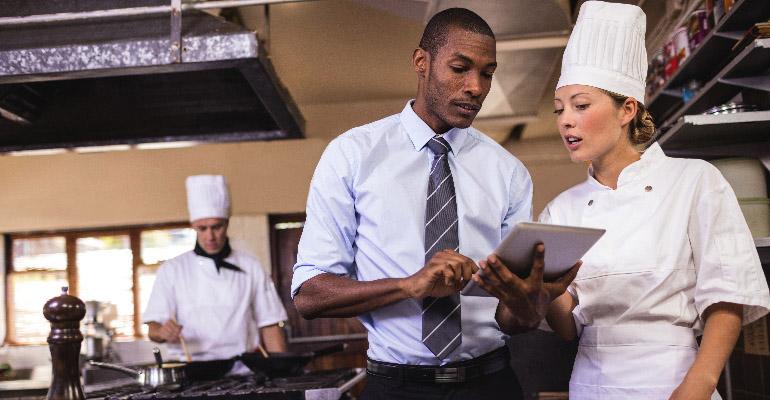Justin Lindsey’s October 2021 LinkedIn post went viral with more than 1.5 million views. Many of us in the restaurant industry are talking about it. Lindsey was about to open his new Chick-fil-A location in Kendall, FL. He was facing the same problems as the rest of the industry: how to get enough employees to serve the consumer demand for his restaurant. Lindsey knew his location was perfect, and that his volume would be high. He estimated that he needed more than 250 workers to operate the location well. But everybody knows the industry is in the middle of a labor crisis. Was it even possible to recruit that many people?
“I started to go through our benefits — tuition support, healthcare, wages — and I thought, ‘How can I give team members two weeks off each month?’” he said. It sounds crazy. Most of us work 22 days each month. Many of us work every day — chained to the technology that is supposed to free us from our desks, working two jobs to make ends meet, working one paid job and then coming home to work another shift in the unpaid but crucially important job of raising our families. Restaurant owners are often labor backstops — covering shifts when employees don’t show up or can’t be found to hire in the first place.
Lindsey’s solution? A three-day work week that offers a reliable and consistent schedule, while rotating front and back halves of the week to create seven days off in a row after each three-day shift. The solution works because he is in Florida, where work weeks are capped at 40 hours before overtime kicks in. It might not work in California, where overtime kicks in after an 8-hour day. It also works because he’s a franchisee for Chick-fil-A, which has held sacrosanct a Sunday day of rest and therefore operates only six days a week. But the nugget of the idea should give all restaurant leaders pause to ask themselves, how am I contributing to this labor crisis? And what changes can I make to solve it?
The labor crisis is not new. The restaurant industry has seen staff turnover far higher than the rest of the private sector for many years. In 2019, the overall hospitality industry had a turnover rate of 78.9%, according to the Bureau of Labor Statistics. During the first year of the pandemic, that rate soared to 130.7%, with fast food restaurants experiencing 144% in 2021. These numbers tell us that retention is perhaps more important than attraction — especially considering the $6,000 estimated cost to replace an existing employee.
The debate around causes roars on — wage rates, government support, fear of illness, difficult customers. But what if the labor “shortage,” while exacerbated at this time, is just a chronic industry issue that needs fundamentally different solutions?
Jenn Lim, CEO of Delivering Happiness, a workplace culture coachsultancy, says happy employees need four things from work: Contribution, Progress, Connection and Autonomy. Aside from some stand-out cultures, the restaurant industry has struggled to offer all four of these factors to hourly employees. The good news is that new technologies make it easier for restaurants to offer what employees want.
Contribution
Employees want to know they are contributing to something larger than themselves. This starts with defining customer service as part of the culture, rather than as a transaction. While no technology can replace the initial welcome and shadowing that demonstrate the culture in action, technology can help consistently convey what that culture is and how it shows up in each task the job requires. A Learning Management System (LMS) like Wisetail or Articulate can provide a more interactive, engaging experience to ensure the team member is provided the right information at the right time. It can assess and evaluate a student’s progress and inform both the local manager and learning and development staff signals of progress or concern. The delivery of content can be mixed between “receiving information” and “applying learned information” in either a digital forum or in a practical assessment exercise. New employees feel confident that they are ready to contribute to the team.
Best of all, an LMS can consistently convey culture and valued behaviors, rather than leaving a local trainer to interpret. Or worse, a new employee alone in a breakroom with a 200-page book to interpret. Through a digital learning experience, a new employee can be greeted with recorded video messages from the CEO or owner about what it means to have them join the team and watch messages from other staff members about what they wished they learned on their first day. Videos can express how the values and ethics that stand you out as a restaurant and employer are demonstrated in the workplace through practical examples and share principles of what makes working at your restaurant fun and rewarding.
The very best Learning Management Systems don’t stop at training content; they underpin the spirit of community and communication within your restaurant. For chains, they help bridge a connection between head office and each individual unit. In this way, every team member is totally clear on the bigger picture they are contributing to with their hourly work.
Progress
According to the DeliveringHappiness.com blog, “people are happier in their jobs when they can experience a strong sense of growth in the work they are doing [no one likes to feel stagnant].” A great LMS can aid employees through their entire tenure. A line cook can learn on the job or have an easy reference if they forget something. Team members continue to learn without a huge time investment from supervisors. Benchmarking analysis of similar site profiles enable regional team managers to intervene where prompted. Through artificial intelligence, companies such as Quorso analyze the performance between locations and recommend changes that reflect the operational practices of those performing more effectively.
Gamification is another way technology can help team members experience growth in their roles. In addition to learning, gamification takes the everyday tasks that are required by well-run operations and turns them into accomplishments. Tools like Jolt track completion rates enabling restaurants to give rewards to team members or teams who continue to grow and progress.
Connection
Connection demands that each team member really feel like they are part of a team. A well-run restaurant often feels like a family.
Technology can increase this human connection through community boards, team communication, shift-swapping and recognition-sharing. Luna Grill coins their team members affectionately “Lunatics.” As COO Steve Holliday said recently, they seek out “moments to collectively celebrate their culture.” Moments may involve videos of the team members dancing and enjoying the culture, endorsements of in-store achievements like customer recognition comments and promotions, and even beyond-store achievements like graduations and weddings. Integration with customer feedback platforms like Ovation or Tattle, or ERP systems like Restaurant365 can make highlighting team member successes easy.
Great communication reinforces not only connection, but also progress and contribution. As organizations celebrate these factors, team members see opportunities to grow with the organization and contribute to its success.
Autonomy
Running a great restaurant requires that every employee execute well on the right tasks at the right time. This kind of minute-to-minute task assignment seems at odds with autonomy. Technology ensures task completion while allowing employees to make decisions about what’s most important at any given time. Platforms like Jolt and Prospr keep track of what needs to get done during a shift while giving employees the flexibility to prioritize based on what’s happening in the restaurant.
Autonomy can start with letting employees decide when they work. Platforms like 7shifts and Prospr let employees easily trade shifts to give the flexibility to manage their other commitments — whether jobs, education or children. Enabling your team members to accept, change and swap schedules is a common feature of most digital scheduling platforms, but the ability to converse with other team members or at least one-way message the team of a need to swap a shift is equally as important.
Setting a culture to reward and incentivize other team members to pick up shifts on behalf of others through gamification is also an option. Badges, collectibles and celebrating team members through community boards championing those supporting others are great ways to corroborate your acceptance toward flexible scheduling while celebrating those that help make it possible.
Lindsey’s three-day week accomplishes the same thing through the opposite approach. Instead of flexibility, employees can use the consistency of their schedule to plan around. They no longer need to fear having their hours cut when they ask for time off, or of being fired when they call out to care for a child. But even Lindsey’s approach needs tech enablement: “We use Slack to hand off a red-book between Team A and Team B,” he said. “Communication is critical to ensure nothing gets lost between the two teams.”
Solving the labor crisis
Leaders that have a finger on the pulse of technology solutions to service consumers and employees have an advantage in addressing the most difficult restaurant labor environment in a generation. The chief technology officer may be best positioned to address labor challenges through their understanding of Saas-based software solutions and integrations to create a seamless and frictionless employee experience. Working with operations and HR to improve recruitment, onboarding and culture building initiatives throughout their organizations may not be easy. But it’s a task that should be tackled with both hands — before it’s too late.
AUTHOR BIO
 Meredith Sandland and Carl Orsbourn are co-authors of “Delivering the Digital Restaurant: Your Roadmap to the Future of Food.” After each spent 20-plus years in corporate strategy and retail food, Meredith and Carl each concluded that food in America was changing. They left their corporate jobs in search of innovation that would transform the restaurant industry. Ghost kitchens, virtual brands, digital marketing, the gig economy and lean operations are at the heart of the future they envision. For more information, visit DeliveringtheDigitalRestaurant.com or email [email protected].
Meredith Sandland and Carl Orsbourn are co-authors of “Delivering the Digital Restaurant: Your Roadmap to the Future of Food.” After each spent 20-plus years in corporate strategy and retail food, Meredith and Carl each concluded that food in America was changing. They left their corporate jobs in search of innovation that would transform the restaurant industry. Ghost kitchens, virtual brands, digital marketing, the gig economy and lean operations are at the heart of the future they envision. For more information, visit DeliveringtheDigitalRestaurant.com or email [email protected].





